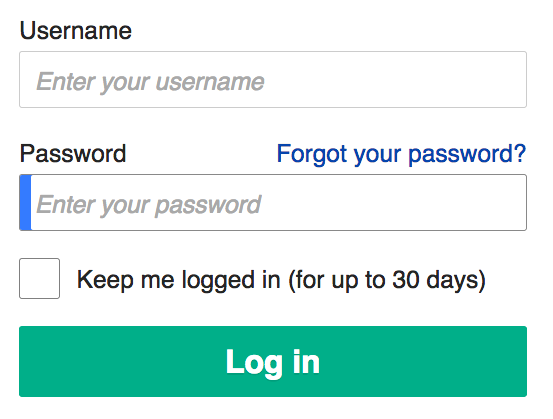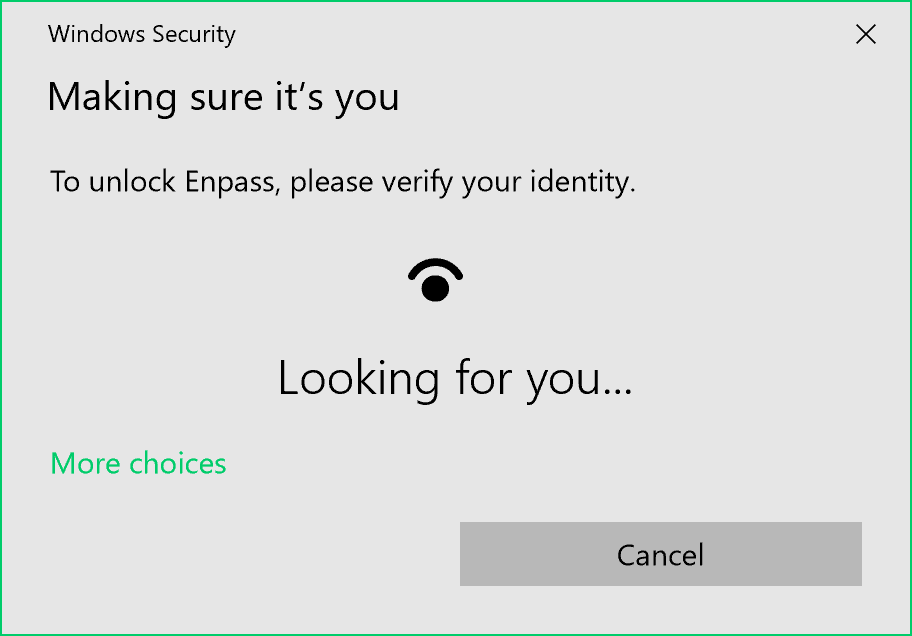|
WebAuthn
Web Authentication (WebAuthn) is a web standard published by the World Wide Web Consortium (W3C). Its primary purpose is to build a system of authentication for web-based applications that solves or mitigates the issues of traditional password-based authentication. Zero-knowledge proofs based on public-key signature schemes are used to register and authenticate users without the need to transmit or store private authenticating information (such as passwords) on servers. Passwords are replaced by the so-called WebAuthn Credentials which are generated client-side and stored in so-called Authenticators. WebAuthn supports both roaming authenticators (such as physical security keys) and platform authenticators (such as smartphones). While different types of credentials are supported, synced discoverable credentials (also known as Passkeys) are the most common ones. WebAuthn is a core component of the FIDO2 Project under the guidance of the FIDO Alliance. On the client side, aut ... [...More Info...] [...Related Items...] OR: [Wikipedia] [Google] [Baidu] |
FIDO2 Project
The FIDO ("Fast IDentity Online") Alliance is an open industry association launched in February 2013 whose stated mission is to develop and promote authentication standards that "help reduce the world’s over-reliance on passwords". FIDO addresses the lack of interoperability among devices that use strong authentication and reduces the problems users face creating and remembering multiple usernames and passwords. FIDO supports a full range of authentication technologies, including biometrics such as fingerprint and iris scanners, voice and facial recognition, as well as existing solutions and communications standards, such as Trusted Platform Modules (TPM), USB security tokens, embedded Secure Elements (eSE), smart cards, and near-field communication (NFC). The USB security token device may be used to authenticate using a simple password (e.g. four-digit PIN) or by pressing a button. The specifications emphasize a device-centric model. Authentication over an insecure channel ... [...More Info...] [...Related Items...] OR: [Wikipedia] [Google] [Baidu] |
Universal 2nd Factor
Universal 2nd Factor (U2F) is an open standard that strengthens and simplifies two-factor authentication (2FA) using specialized Universal Serial Bus (USB), near-field communication (NFC), or Bluetooth Low Energy (BLE) devices based on similar security technology found in smart cards. It is succeeded by the FIDO2 Project, which includes the W3C Web Authentication ( WebAuthn) standard and the FIDO Alliance's Client to Authenticator Protocol 2 (CTAP2). While initially developed by Google and Yubico, with contribution from NXP Semiconductors, the standard is now hosted by the FIDO Alliance. Advantages and disadvantages While time-based one-time password (TOTPs) (e.g. 6-digit codes generated on Google Authenticator) were a significant improvement over SMS-based security codes, a number of security vulnerabilities were still possible to exploit, which U2F sought to improve. Specifically: In terms of disadvantages, one significant difference and potential drawback to be consid ... [...More Info...] [...Related Items...] OR: [Wikipedia] [Google] [Baidu] |
Client To Authenticator Protocol
The Client to Authenticator Protocol (CTAP) or X.1278 enables a roaming, user-controlled cryptographic authenticator (such as a smartphone or a hardware security key) to interoperate with a client platform such as a laptop. Standard CTAP is complementary to the Web Authentication (WebAuthn) standard published by the World Wide Web Consortium (W3C). WebAuthn and CTAP are the primary outputs of the FIDO2 Project, a joint effort between the FIDO Alliance and the W3C. CTAP is based upon previous work done by the FIDO Alliance, in particular the Universal 2nd Factor (U2F) authentication standard. Specifically, the FIDO U2F 1.2 Proposed Standard (July 11, 2017) became the starting point for the CTAP Proposed Standard, the latest version 2.2 of which was published on February 28, 2025. The CTAP specification refers to two protocol versions, the CTAP1/U2F protocol and the CTAP2 protocol. An authenticator that implements CTAP2 is called a FIDO2 authenticator (also called a ... [...More Info...] [...Related Items...] OR: [Wikipedia] [Google] [Baidu] |
Passwordless Web Authentication
Passwordless authentication is an authentication method in which a user can log in to a computer system without entering (and having to remember) a password or any other knowledge-based secret. In most common implementations users are asked to enter their public identifier (username, phone number, email address etc.) and then complete the authentication process by providing a secure proof of identity through a registered device or token. Passwordless authentication methods typically rely on public-key cryptography infrastructure where the public key is provided during registration to the authenticating service (remote server, application or website) while the private key is kept on a user’s device ( PC, smartphone or an external security token) and can be accessed only by providing a biometric signature or another authentication factor which is not knowledge-based. These factors classically fall into two categories: * Ownership factors (“Something the user has”) such as ... [...More Info...] [...Related Items...] OR: [Wikipedia] [Google] [Baidu] |
Web Authentication Working Group
The Web Authentication Working Group, created by the World Wide Web Consortium The World Wide Web Consortium (W3C) is the main international standards organization for the World Wide Web. Founded in 1994 by Tim Berners-Lee, the consortium is made up of member organizations that maintain full-time staff working together in ... (W3C) on February 17, 2016, has for mission, in the Security Activity, to define a client-side API providing strong authentication functionality to Web Applications. On 20 March 2018, the WebAuthn standard was published as a W3C Candidate Recommendation. References World Wide Web Consortium {{Nongov-org-stub ... [...More Info...] [...Related Items...] OR: [Wikipedia] [Google] [Baidu] |
Web Standard
Web standards are the formal, non-proprietary standards and other technical specifications that define and describe aspects of the World Wide Web. In recent years, the term has been more frequently associated with the trend of endorsing a set of standardized best practices for building web sites, and a philosophy of web design and development that includes those methods. Overview Web standards include many interdependent standards and specifications, some of which govern aspects of the Internet, not just the World Wide Web. Even when not web-focused, such standards directly or indirectly affect the development and administration of web sites and web services. Considerations include the interoperability, accessibility and usability of web pages and web sites. Web standards consist of the following: * Recommendations published by the World Wide Web Consortium (W3C), such as HTML/ XHTML, Cascading Style Sheets (CSS), image formats such as Portable Network Graphics (PNG) ... [...More Info...] [...Related Items...] OR: [Wikipedia] [Google] [Baidu] |
Password
A password, sometimes called a passcode, is secret data, typically a string of characters, usually used to confirm a user's identity. Traditionally, passwords were expected to be memorized, but the large number of password-protected services that a typical individual accesses can make memorization of unique passwords for each service impractical. Using the terminology of the NIST Digital Identity Guidelines, the secret is held by a party called the ''claimant'' while the party verifying the identity of the claimant is called the ''verifier''. When the claimant successfully demonstrates knowledge of the password to the verifier through an established authentication protocol, the verifier is able to infer the claimant's identity. In general, a password is an arbitrary String (computer science), string of character (computing), characters including letters, digits, or other symbols. If the permissible characters are constrained to be numeric, the corresponding secret is sometimes ... [...More Info...] [...Related Items...] OR: [Wikipedia] [Google] [Baidu] |
Windows Hello
Windows 10 is a major release of Microsoft's Windows NT operating system. The successor to Windows 8.1, it was released to manufacturing on July 15, 2015, and later to retail on July 29, 2015. Windows 10 was made available for download via MSDN and TechNet, as a free upgrade for retail copies of Windows 8 and Windows 8.1 users via the Microsoft Store, and to Windows 7 users via Windows Update. Unlike previous Windows NT releases, Windows 10 receives new builds on an ongoing basis, which are available at no additional cost to users; devices in enterprise environments can alternatively use long-term support milestones that only receive critical updates, such as security patches. It was succeeded by Windows 11, which was released on October 5, 2021. In contrast to the tablet-oriented approach of Windows 8, Microsoft provided the desktop-oriented interface in line with previous versions of Windows in Windows 10. Other features added include Xbox Live integration, Cortan ... [...More Info...] [...Related Items...] OR: [Wikipedia] [Google] [Baidu] |
JavaScript
JavaScript (), often abbreviated as JS, is a programming language and core technology of the World Wide Web, alongside HTML and CSS. Ninety-nine percent of websites use JavaScript on the client side for webpage behavior. Web browsers have a dedicated JavaScript engine that executes the client code. These engines are also utilized in some servers and a variety of apps. The most popular runtime system for non-browser usage is Node.js. JavaScript is a high-level, often just-in-time–compiled language that conforms to the ECMAScript standard. It has dynamic typing, prototype-based object-orientation, and first-class functions. It is multi-paradigm, supporting event-driven, functional, and imperative programming styles. It has application programming interfaces (APIs) for working with text, dates, regular expressions, standard data structures, and the Document Object Model (DOM). The ECMAScript standard does not include any input/output (I/O), such as netwo ... [...More Info...] [...Related Items...] OR: [Wikipedia] [Google] [Baidu] |
Mozilla
Mozilla is a free software community founded in 1998 by members of Netscape. The Mozilla community uses, develops, publishes and supports Mozilla products, thereby promoting free software and open standards. The community is supported institutionally by the Nonprofit organization, non-profit Mozilla Foundation and its tax-paying subsidiary, the Mozilla Corporation. List of Mozilla products, Mozilla's current products include the Firefox web browser, Mozilla Thunderbird, Thunderbird e-mail client (now through a subsidiary), the Bugzilla bug tracking system, the Gecko (software), Gecko layout engine, and the Pocket (service), Pocket "read-it-later-online" service. History On January 23, 1998, Netscape announced that its Netscape Communicator browser software would be free, and that its source code would also be free. One day later, Jamie Zawinski of Netscape registered . The project took its name, "Mozilla", from the original code name of the Netscape Navigator browser—a por ... [...More Info...] [...Related Items...] OR: [Wikipedia] [Google] [Baidu] |


